

Die Fernweh Bilder
Berlin


Berlin is the capital city of Germany, and is also the largest city in Germany. I have been to Berlin once for a three day outing with my family during the year of my high school graduation. You can jump to the site-seeing section for some itinerary recommendations.
The Stay & Transit:
While staying in Berlin, we stayed at the Seehotel Grunewald (translating into 'Sea Hotel Green Forest') for approximately 178 Euros a night, with breakfast and dinner included. Vacationing in a city is considerably more expensive than vacationing in the idyllic Bavarian countryside, but the stay was still a good deal, considering that the room came with a full-fledged bathroom and a balcony. It was also quiet, peaceful, and located directly with a scenic view from the hotel room to a lake. Click on the button to visit the hotel's webpage.
Transit
While in Berlin, the primary activity involved walking around the city seeing various sites and landmarks. Our first stop was to the Berlin U-Bahn (like a subway), to purchase tickets to transport us around the city. While we did have a car, most of the places require paid parking, which can raise costs pretty quickly, and there is no guarantee that there will be any place to park near the sites that people wish to see--or even any parking at all. It is best to use the U-Bahn to get around efficiently and cheaply.

Site-seeing & Itinerary Recommendations:
Click on any of the following buttons to jump to specific sections.
Berlin Wall, Checkpoint Charlie, & The DDR Museum
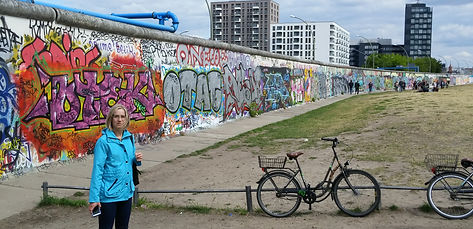

One of the first sites that we saw was a rather personal site for my family, since my Opa’s brother, Norbert, ended up getting stuck in Eastern Germany when the wall went up. First, we saw the wall, which is now--seemingly disappointing to those who would have wished to see the actual relic as it was (to better understand the feeling)--a short structure rife with graffiti and some murals (I think the the murals are nice). Next up was Checkpoint Charlie, a famous checkpoint which served as a crossing point from East Berlin into West Berlin. Uncle Norbert was allowed through the checkpoint once in order to celebrate my Opa’s 50th birthday with him. While he was allowed, his family was not and was kept under close surveillance while he was gone. If my Uncle Norbert had not returned to East Germany to the DDR as he said he would, his family would have been imprisoned and “questioned” immediately.
Next, we visited the DDR Museum, where we learned about the life of a typical East German. For instance, there was a wait-list to get a car, and everyone got the same car, no matter what. An extra barbed wire fence, watch towers, and a field of landmines was implemented behind the wall as a secondary measure of defense, after East Germans experienced several incidents of citizens “escaping” over the walls. There was a room that detailed how suspected citizens would be interrogated. They were kept in a rooms with no windows, a light shining constantly in their eyes, depriving them of both sleep and their sense of time, and interrogators constantly shouted at them. Click the button to go to the webpage for the DDR Museum.
Berlin TV Tower, The Gates of Brandenburg, & The KaDeWe

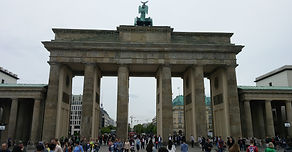

Next was the Berlin TV tower, which stands on the east side of where the wall was. It served as a broadcasting station for several tv and radio channels after the wall was demolished. Before the wall was demolished, it was of course used to broadcast propaganda and DDR media. Next we saw The Gates of Brandenburg. The Brandenburg Gates have had several purposes throughout history, and were originally built during the war with Prussia. Theywere once used to declare where the capital of the kingdom of Prussia should have been. The gates were then later repurposed during one of Napoleon’s victory marches, and then again later—and finally, upon the demolition of the wall—as a symbol of reunification in Germany between East and West Germany, because while the wall was there, no Germans were allowed to visit the gate.
We also went to the KaDeWe (Kaufhaus Des Westens or “Shopping House of the West”). It is a location of luxury shopping in Berlin. Clothing was expensive, starting at around 350 Euros for a pair of shoes (not my personal price-range; I prefer more functional, less expensive options for travel). However, the chocolate store there offered an immense selection. Chocolates were far less expensive than the clothes, at least, starting at around 10 Euros. While we were there, we opted to buy lunch at the deli and chocolates as gifts for friends back home. Click the button to visit either the TV Tower, the Brandenburg Gate, or the KaDeWe's official website.
The Olympic Stadium and the Reichstag Building
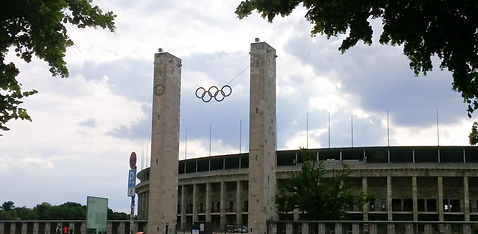
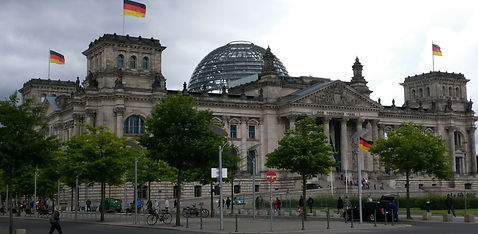
We toured the Olympic stadium that housed the 1936 Summer Olympic games. Hitler ordered the stadium to be renovated in 1933, shortly before the Olympic games of 1936, in order to reflect Nazi propaganda with a special box area for himself and his officers, and an eagle over the Olympic logo. The stadium still remains standing, even though there was much debate about whether to destroy it or not, given its connection with Hitler. However, the stadium remains in tact and is available for tours to this day, also housing occasional sports games and concerts. Tours can be booked on their site, however, as of right now, tours are unavailable due to the pandemic (as is pretty much everything in Germany at the moment).
While in Berlin, we also visited the Reichstag building, the Parliamentary building where the Chancellor and other important officials debate things. The building has a glass dome on top, with a glass bottom that allows people to see the area where the parliament meets. The glass dome is symbolizes transparency between the government and the people. While visiting, there are several different options. You can take a guided tour through the building, attend a planery session, and attend planery lectures. There is also the option for children to listen to their own version (meaning a version that is engaging for small children) of an audio recording for a tour. The button will take you to the official webpage for booking tours and visits at the Reichstag Building.
Kaiser Wilhelm Memorial Church & Holocaust Memorial
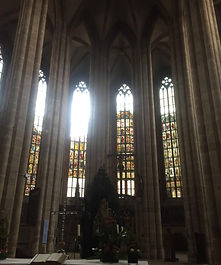


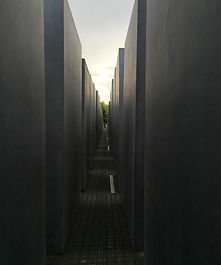
We also happened upon Kaiser Wilhelm Memorial Church, something which was not originally on our docket, but which we constituted as interesting upon seeing that it was half-destroyed. The Kaiser Wilhelm Memorial Church was partially destroyed in the bombings of World War II, but still remains a tourist attraction for passerbys. It is free of cost to enter, but officials merely ask people to be quiet and respectful of their environment, because some people still go and pray there.
We were also supposed to visit the Holocaust Museum during our Berlin visit, but because my family and I were nearing the end of our time in Berlin, and we needed to leave on the third morning to go home (because the drive from Berlin to Mainz, where my grandparents were staying, was a rather long drive). Instead, upon seeing that the line to get tickets for the Holocaust Museum—most likely the most popular museum—snaked out the door and a couple of blocks down the street, we decided to view the Holocaust Memorial outside the museum. The memorial’s structure is meant to mimic the little space that the Jews had, and the way that they were often crammed so closely together that they could not breath. One is able to walk through the memorial, experiencing this stifling feeling for themselves, and people are allowed to take photos. However, one of the things that shocked me was the disrespect to the monument that I saw from some of the tourists. The briefing for the memorial specifically asked that people not run, play, or jump on the blocks of the memorial, yet people who were adults or considered old enough to read and understand the rule were still running and jumping from block to block. While I would have understood a young child or toddler disregarding the rules, I was shocked that someone who could understand them would display such disrespect for the monument.
Click the buttons to view either the official webpage of the Kaiser Wilhelm Memorial Church or the webpage of The Holocaust Memorial.